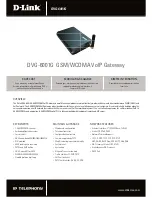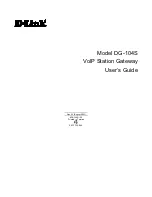
BreadCrumb
®
LX4 User Guide
Rajant Corporation
Version: 2.02
03-100117-001
1.2 Mobility through Meshing
The key component to a BCWN is a technique known as Meshing. While this is generally handled
automatically by BreadCrumbs, complex deployment scenarios require a basic understanding of how
BreadCrumbs establish and maintain a mesh.
1.2.1 Mesh – A Definition
A mesh is a collection of network devices (in our case, BreadCrumbs), each of which is linked to one
or more other BreadCrumbs. Data can move between BreadCrumbs via these links, possibly passing
through several intermediate BreadCrumbs before arriving at its final destination.
The intelligence of a BCWN is in how it adapts rapidly to the creation or destruction of the links in
the mesh as devices are moved, switched OFF or ON, blocked by obstructions, interfered with by
other devices, or otherwise affected. This adaptation takes place automatically and immediately as
needed.
Note
Although all BreadCrumbs can be access points, most access points do not provide
mesh capability. Traditional access points simply allow wireless devices within
range to connect to a wired network; they do not extend range through other access
points.
1.2.2 BreadCrumb Mesh Connections
In order for two BreadCrumbs to establish a mesh link to each other, they must be set to the same
radio channel, and the same ESSID, and have the same InstaMesh key settings. An ESSID is
essentially a name for a wireless network. By default, BreadCrumbs use the ESSID "breadcrumb54-
v10” if programmed with version 10 firmware. InstaMesh key settings include the Network
Authentication Key (NAK) and the Network Encryption Key (NEK).
Assuming that the security settings are the same, the following examples illustrate how the use of
channels and ESSIDs can establish or break mesh links:
2











































